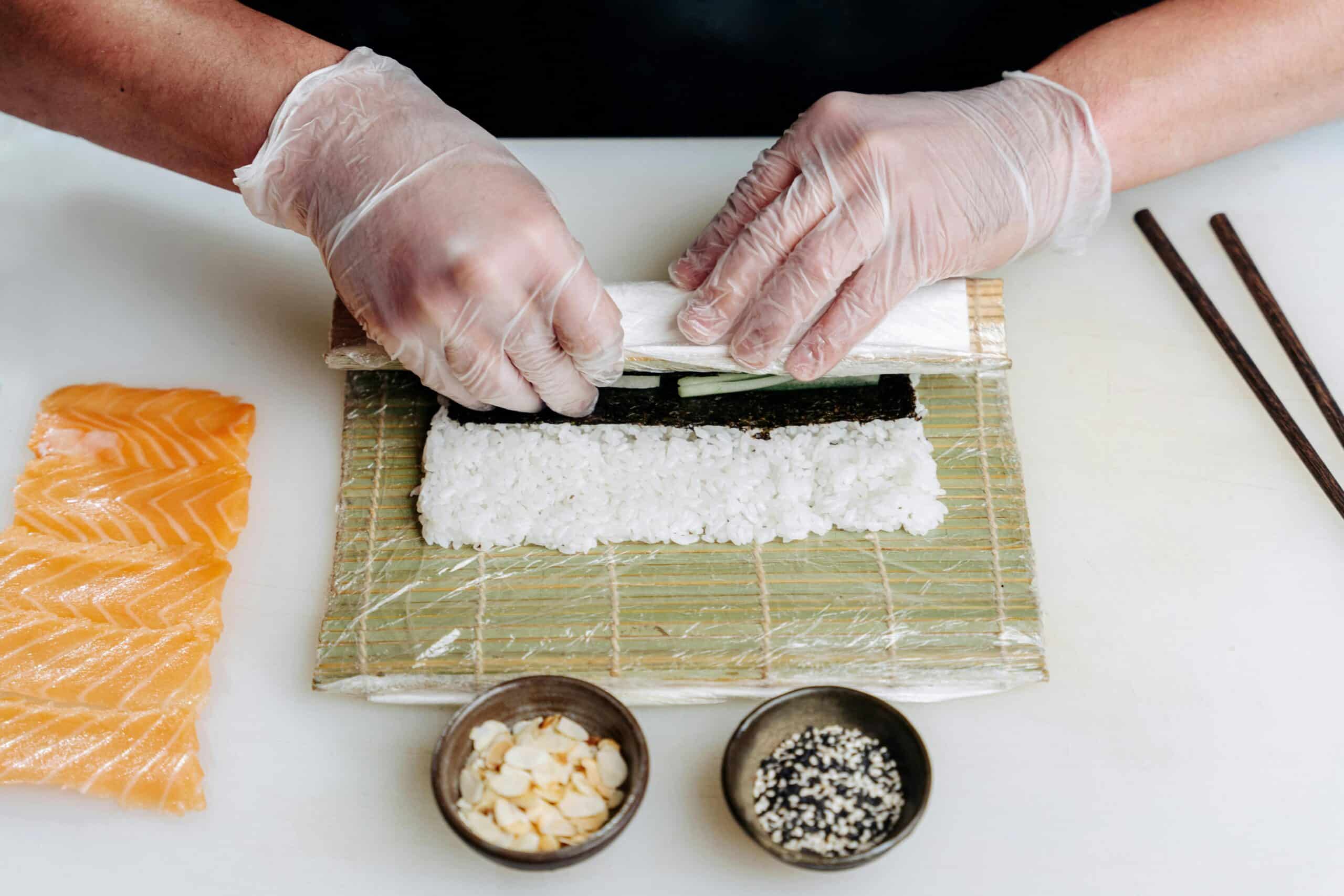
The Secrets of Perfect Sushi Making at Home
Sushi is a famous dish from Japan. People around the world love it for its mix of flavours, textures, and beautiful presentation. While it may seem like an art best left to professional chefs, learning how to make sushi at home is possible. You need the right techniques and ingredients. You can be a beginner or looking to refine your skills. You can master the best sushi rice techniques and understand Japanese cooking basics. These tips will help you create restaurant-quality sushi in your own kitchen.
The Fundamentals of Sushi Making

Before you roll sushi, know the key elements of perfect sushi.
1. Choosing the Right Ingredients
Quality ingredients are the foundation of great sushi.
- Sushi-Grade Fish: Only use fresh, high-quality fish from a reputable source. Options include tuna, salmon, yellowtail, and mackerel.
- Nori (Seaweed): Opt for high-quality, crisp nori sheets for the best texture and flavour. Avoid stale or brittle sheets, which can ruin your rolls.
- Vegetables: Cucumber, avocado, radish, and bell peppers add freshness, crunch, and balance to sushi.
- Condiments: Soy sauce, wasabi, and pickled ginger enhance the overall flavour profile.
- Rice Vinegar, Sugar, and Salt: These are used to season the sushi rice, giving it the signature tangy taste.
2. Mastering the Best Sushi Rice Techniques
Rice is the heart of sushi, and perfecting it requires precision.
- Choose Short-Grain Rice: Authentic sushi rice (shari) should be sticky yet firm. Brands such as Nishiki or Kokuho Rose are commonly used.
- Rinse Well: Wash the rice several times until the water is clear. This gets rid of extra starch and stops it from being too sticky.
- Cook Properly: Use a 1:1.2 ratio of rice to water for ideal texture. A rice cooker ensures consistent results.
- Season Correctly: Mix rice vinegar, sugar, and salt into the rice while it’s still warm to absorb flavours effectively.
- Cool Properly: Spread the rice out in a wooden bowl (hangiri) and fan it gently for a glossy finish. This step prevents it from becoming mushy.
3. Essential Sushi-Making Tools
Having the right tools makes sushi preparation easier and more enjoyable.
- Bamboo Mat (Makisu): Essential for rolling sushi tightly and evenly.
- Sharp Knife: A well-sharpened knife ensures clean cuts, preventing rolls from falling apart.
- Rice Paddle (Shamoji): Helps mix and spread rice without crushing grains.
- Small Bowl of Water: Prevents rice from sticking to your hands while shaping rolls or nigiri.
- Sushi Rolling Plastic Wrap: Helps create smooth rolls when making uramaki (inside-out rolls).
Different Types of Sushi and How to Make Them

1. Maki (Rolled Sushi)
Maki is the most recognisable sushi, rolled using nori and a bamboo mat.
Ingredients:
- 1 cup sushi rice
- 1 nori sheet
- 100 g sushi-grade salmon or tuna
- ½ avocado, sliced
- Soy sauce and wasabi for serving
Instructions:
- Place a sheet of nori on the bamboo mat.
- Spread a thin layer of sushi rice, leaving a 2 cm border at the top.
- Lay the fish and avocado in a line near the bottom.
- Roll tightly using the mat, applying gentle pressure.
- Slice into bite-sized pieces using a sharp knife.
2. Nigiri (Hand-Pressed Sushi)
Nigiri consists of hand-shaped sushi rice topped with fish.
Ingredients:
- 1 cup sushi rice
- 100 g sushi-grade tuna or salmon, sliced thinly
- Wasabi
Instructions:
- Wet your hands with water and shape a small ball of sushi rice.
- Apply a tiny dab of wasabi to the fish slice.
- Press the fish gently onto the rice, shaping it with your fingers.
- Serve with soy sauce and pickled ginger.
3. Uramaki (Inside-Out Rolls)
Uramaki, or inside-out rolls, have rice on the outside, often coated with sesame seeds or tobiko.
Ingredients:
- 1 cup sushi rice
- 1 nori sheet
- 100 g crab meat or shrimp
- ½ cucumber, julienned
- 1 tbsp sesame seeds or tobiko
Instructions:
- Lay nori on a bamboo mat and spread rice evenly over it.
- Flip the nori so the rice faces down.
- Add crab meat and cucumber.
- Roll tightly and coat with sesame seeds.
- Slice into even pieces and serve the sushi plate.
4. Temaki (Hand Rolls)
A cone-shaped sushi that’s easy to make and perfect for casual dining.
Ingredients:
- 1 nori sheet, cut in half
- ½ cup sushi rice
- 50 g sushi-grade fish or tofu
- Cucumber and avocado slices
Instructions:
- Place nori in your palm and spread a thin layer of rice on one side.
- Add fish, avocado, and cucumber.
- Roll into a cone shape and seal with a little rice.
- Enjoy immediately for the best texture.
Pro Tips for Perfect Sushi at Home

1. Keep Your Hands Wet
Sushi rice is sticky, so dip your hands in water before handling it to prevent sticking.
2. Use a Very Sharp Knife
A dull knife will tear the sushi rather than slicing it cleanly. Dip the knife in warm water between cuts for a smoother slice.
3. Avoid Overfilling Rolls
Too many ingredients make rolling difficult and cause sushi to fall apart. A light hand ensures compact, firm rolls.
4. Experiment with Flavours
Try adding spicy mayo, eel sauce, or tempura flakes for unique twists on classic sushi.
5. Serve Sushi Fresh
Sushi is best enjoyed immediately after preparation for optimal texture and flavour. Leaving it out for too long can dry out the rice and affect taste.
The Cultural Significance of Sushi
Sushi is deeply rooted in Japanese culture, representing more than just a meal. It symbolises craftsmanship, precision, and respect for ingredients. Sushi chefs train for years to master their craft. They honour techniques that have been around for centuries. Making sushi at home is easy. You don’t need expert skills. However, understanding its cultural importance helps you enjoy it even more.
Mastering Sushi Making at Home
Learning how to make sushi at home is a rewarding experience. You get to explore Japanese cooking basics while learning the best sushi rice techniques. Using good ingredients, the right tools, and some practice, you can make restaurant-quality sushi at home.
Ready to roll? Try these techniques and share your sushi-making experiences in the comments below!